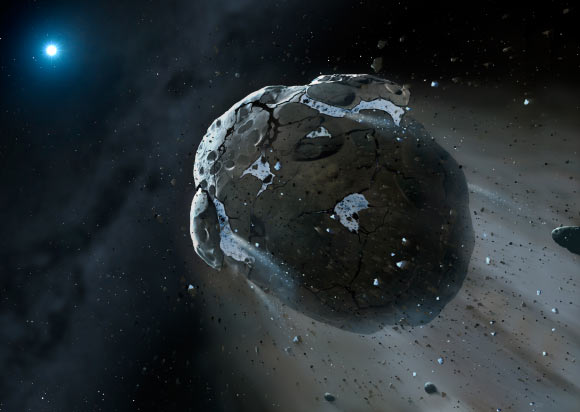2021 PJ1, a near-Earth asteroid between 20 and 30 m (66-98 feet) across, safely flew past Earth on August 14, 2021 at a distance of over 1.7 million km (1 million miles). The approach was historic, marking the 1,000th near-Earth asteroid to be observed by NASA’s planetary radar in just over 50 years.
Source: Sci News
“Since the first radar observation of the asteroid 1566 Icarus in 1968, this powerful technique has been used to observe passing near-Earth objects (NEOs): asteroids and comets,” said Dr. Lance Benner of NASA’s Jet Propulsion Laboratory and colleagues.
“These radar detections improve our knowledge of NEO orbits, providing the data that can extend calculations of future motion by decades to centuries and help definitively predict if an asteroid is going to hit Earth, or if it’s just going to pass close by.”
“For example, recent radar measurements of the potentially hazardous asteroid Apophis helped eliminate any possibility of it impacting Earth for the next 100 years.”
“In addition, they can provide scientists with detailed information on physical properties that could be matched only by sending a spacecraft and observing these objects up close.”
Depending on an asteroid’s size and distance, radar can be used to image its surface in intricate detail while also determining its size, shape, spin rate, and whether or not it is accompanied by one or more small moons.
In the case of 2021 PJ1, the asteroid was too small and the observing time too short to acquire images.
But as the 1,000th NEA detected by planetary radar, the milestone highlights the efforts to study the NEAs that have passed close to Earth.
“2021 PJ1 is a small asteroid, so when it passed us at a distance of over a million miles, we couldn’t obtain detailed radar imagery,” Dr. Benner said.
“Yet even at that distance, planetary radar is powerful enough to detect it and measure its velocity to a very high precision, which improved our knowledge of its future motion substantially.”
The astronomers used the 70-m (230-foot) Deep Space Station 14 (DSS-14) antenna at NASA’s Deep Space Network’s Goldstone Deep Space Complex near Barstow, California, to transmit radio waves to 2021 PJ1 and receive the radar reflections.
“Of all the asteroids observed by planetary radar, well over half were observed by the large 305-m (1,000-foot) telescope at Arecibo Observatory in Puerto Rico before it was damaged and decommissioned in 2020,” they said.
“Goldstone’s DSS-14 and 34-m (112-foot) DSS-13 antennas have observed 374 near-Earth asteroids to date.”
“14 NEAs have also been observed in Australia using antennas at the Deep Space Network’s Canberra Deep Space Communication Complex to transmit radio waves to the asteroids and the CSIRO’s Australian Telescope Compact Array and Parkes Observatory in New South Wales to receive the radar reflections.”
Source: Sci News

































Leave a Comment
You must be logged in to post a comment.